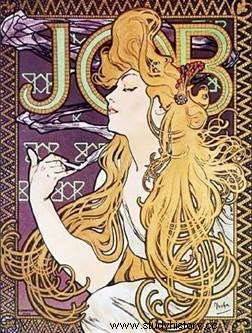 Nostalgic expression born after the shock of the First World War, the Belle Époque refers to the carefree years that lead French society from 1890 to 1914, described as a golden age. Despite some upheavals, the Third Republic ended up imposing itself in France and unifying the nation around a common political project. If social inequalities widened with the appearance of an urban proletariat, it was also a period of economic growth, boosted by numerous technological innovations, and monetary stability. Finally the Belle Epoque corresponds to an unprecedented cultural and artistic apogee in France since the Age of Enlightenment .
Nostalgic expression born after the shock of the First World War, the Belle Époque refers to the carefree years that lead French society from 1890 to 1914, described as a golden age. Despite some upheavals, the Third Republic ended up imposing itself in France and unifying the nation around a common political project. If social inequalities widened with the appearance of an urban proletariat, it was also a period of economic growth, boosted by numerous technological innovations, and monetary stability. Finally the Belle Epoque corresponds to an unprecedented cultural and artistic apogee in France since the Age of Enlightenment .
A strong republic
After the multiple political upheavals and numerous scandals that weakened the establishment and the beginning of the Third Republic, France experienced, from the end of the 19th century, a period of institutional stability and the establishment of an increasingly efficient economic system. The Dreyfus affair, and the deep division which opposed the whole of French society, finally led, even before the rehabilitation of Captain Dreyfus, to the establishment of a more coherent political regime, where all the social components seem play an active role in the emancipation of the state. The latter asserted itself with the law of separation of church and state in 1905.
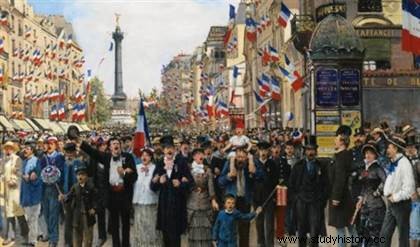
It is therefore time for euphoria, even if economic progress does not benefit all of society. Certainly, social legislation, from the presidency of Jules Grévy, is gradually reinforced. Education is intended to be accessible to all, while the right to vote is becoming widespread. Overall, the standard of living is up, the economy is running at full speed and the financial system, around the franc as the national currency, is firmly established.
But the social component that benefits the most from progress is undoubtedly the bourgeoisie in the business community and the privileged representatives of the state, mainly in Paris. The France of the provinces, mainly agricultural, only represents an increasingly small portion of income, despite an increasingly productive agriculture. Anarchist attacks, workers' strikes and repetitive popular demonstrations bear witness to a malaise even within the lowest classes of society.
Economic growth and demographic stability
There is undeniably some truth in the myth of the Belle Époque. The French economy has experienced remarkable progress since the defeat of 1871:the production of coal - the main source of energy - rose from 17 to 40 million tonnes between 1871 and 1914, while the rate of industrial growth, which stagnated since 1820 around 1.5%. per year, falls, according to low estimates, to 33% from 1900 and rises to more than 5%. immediately before the war. Salaries increase by around 60%, with nuances according to sectors and regions; the peasant income also increases.
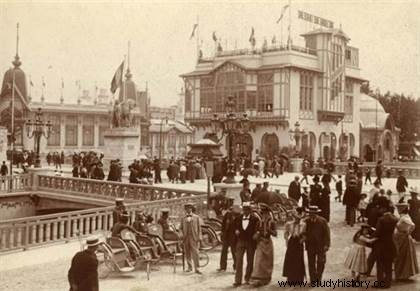 But the most striking phenomenon in the genesis of the myth of the Belle Époque is undoubtedly monetary stability, the value of the franc remained unchanged from 1815 to 1914. Inflation was practically nil, and the issue of transferable securities quintupled between 1890 and 1913, while the value of annuities issued by the State increased by 40% between 1871 and 1900.
But the most striking phenomenon in the genesis of the myth of the Belle Époque is undoubtedly monetary stability, the value of the franc remained unchanged from 1815 to 1914. Inflation was practically nil, and the issue of transferable securities quintupled between 1890 and 1913, while the value of annuities issued by the State increased by 40% between 1871 and 1900.
This economic growth corresponds to exceptional demographic stagnation:between 1871 and 1914, the rate of natural increase never exceeded 0.2% per year, with the French population increasing by 9 .7% against 51% in Germany. Malthusianism, if it worries some thinkers and politicians, also accentuates the general (although unequal) progress in the standard of living.
Belle Époque innovations
France is resolutely committed to modernity, with Paris as the essential capital of progress and cultural life. Technical inventions gradually changed the lives of the French with improvements in photography giving rise to a new genre of illustration. Cinema, thanks to the work of the Lumière brothers, is becoming an increasingly attractive art.
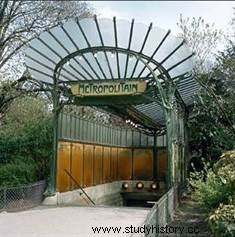 Means of transport and locomotion are flourishing. In addition to the railway, the velocipede, an attraction reserved for the wealthy, is revised, in favor of a more practical and democratic two-wheeler, the bicycle. Multiple research relating to the development of engines allows the invention of the motorcycle, and the automobile makes its appearance. Finally, aviation experienced its first successes.
Means of transport and locomotion are flourishing. In addition to the railway, the velocipede, an attraction reserved for the wealthy, is revised, in favor of a more practical and democratic two-wheeler, the bicycle. Multiple research relating to the development of engines allows the invention of the motorcycle, and the automobile makes its appearance. Finally, aviation experienced its first successes.
The urban setting continues to change:in line with the directives of Baron Haussmann, the major cities are completing the acquisition of prestigious real estate complexes, enhanced by the facilities linked to progress technology such as the elevator — which increases the number of floors to eight or nine, the highest soon becoming the most prestigious — or electricity. In Paris, not only are the quays of the 16th arrondissement well laid out but, in the eastern arrondissements, remarkable working-class housing estates testify that all social strata can claim to benefit from abundance.
While modernity is gradually changing urban life, it is also a product on display. From the Universal Exhibition of 1900, which saw the construction of the Grand and Petit Palais, as well as the completion of the Alexandre III bridge, electricity became an object of wonder. These modern means of construction make it possible to erect increasingly colossal structures in which industrialization finds a case of circumstance. The architect, promised definitively to the rank of artist, now favors structure and form, often to the detriment of decoration.
Arts and culture during the Belle Époque
The Belle Époque was first and foremost an opportunity to see an art influenced by industrialization flourish, as architecture reflects. Goldsmithing, furnishing and the decorative arts regain their letters of nobility. This is how in Paris, and in the main cities of Europe, Art Nouveau spreads, where allegorical themes, the exuberance of nature and the madness of curves are privileged. Only painting, with cubism as its ambassador, still favors structure and the straight line.
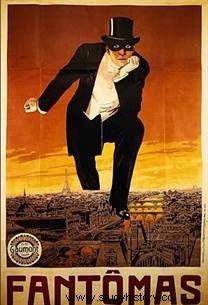 The abundant literature turns to adventure, escape and the enhancement of the individual, sort of egocentric but generous hero, confronted with the triumphant industrial society of his time. This is how the detective novel and the first science fiction stories appeared, to the detriment of more traditional literature. The blossoming of newspapers, more and more free and numerous, first favored serial novels as a means of disseminating literary art. But access to the book is then democratized with new printing and illustration techniques, so that the image is more and more essential. Comics spread, thanks to the daily newspapers.
The abundant literature turns to adventure, escape and the enhancement of the individual, sort of egocentric but generous hero, confronted with the triumphant industrial society of his time. This is how the detective novel and the first science fiction stories appeared, to the detriment of more traditional literature. The blossoming of newspapers, more and more free and numerous, first favored serial novels as a means of disseminating literary art. But access to the book is then democratized with new printing and illustration techniques, so that the image is more and more essential. Comics spread, thanks to the daily newspapers.
The wealthiest strata of French society, imbued with a certain frivolity sometimes erected as an art of living, indulge in luxury and carelessness, courtesans and prostitutes, whose presence is fashionable in the artistic circles of the capital, contribute to the spread of the circus and the music hall. The search for the sensational and the extraordinary is at the origin of the craziest manifestations, thus making us forget the misery or the dreary banality of everyday reality. Seaside resorts and thermal spas are quickly becoming fashionable for the more affluent.
France and Europe
After the Second Empire, France was keen to maintain its place among the great powers. The policy of Napoleon III, favoring armed expeditions, ended in 1870 with the failure of Sedan and, in 1871, with the cession of Alsace and the Moselle during the ratification of the Treaty of Frankfurt.
Hungry for revenge, the Third Republic, far from disarming itself, advocated a policy of peace and harmony, while colonization continued. Faced with increasingly strong nationalist demands, both in Ireland and Poland and, above all, in the Balkans and in the east of the Austro-Hungarian Empire, the policy of alliances imposed itself in a haunting way in the eyes of the leaders. French. From 1873, under the impetus of the Prussian Chancellor Bismarck, the great powers of Europe sought lasting diplomatic alliances:Thus, a first union brought together Germany, Austria-Hungary and Russia.
Following Russia's increasingly exaggerated territorial claims, a new, equally fragile alliance was born in 1882. It now excluded the Romanov Empire, in favor of the kingdom of Italy. To the east of France, now, stands the Triple Alliance, in this case a threatening political and military front, stretching from the Baltic Sea to the Mediterranean Sea. However, the French authorities, preoccupied by their colonial troubles, did not immediately realize the danger. Russia, on the other hand, perceives the threat posed to its western borders by the Triple Alliance.
The consequences of the colonial policy
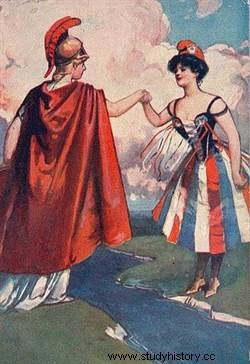 It was not until 1890 that the Russian Empire, excluded from the Triple Alliance, turned to France for political and financial support. From January 1894, the two states entered into a diplomatic alliance comprising, mainly, military support in the event of conflict. From now on, Russia can more serenely pursue its colonial policy towards Asia.
It was not until 1890 that the Russian Empire, excluded from the Triple Alliance, turned to France for political and financial support. From January 1894, the two states entered into a diplomatic alliance comprising, mainly, military support in the event of conflict. From now on, Russia can more serenely pursue its colonial policy towards Asia.
The Third Republic, on the other hand, faces a much more delicate situation. The French troops, engaged in particular in the colonization of West Africa, are slowed down by the political enterprises of Victorian Great Britain. Also, in 1904, under the impetus of the French Ministry of Foreign Affairs, a diplomatic rapprochement was made, a prelude to the establishment of a fragile Entente Cordiale.
European states are gradually entering into a deaf and latent opposition. In 1905, the regulation of the practical methods for the control of Morocco opposes the French claims to the German claims. The situation degenerated with, in 1906, the setback recorded by the Germanic Empire during the international conference of Algeciras, in Spain. Great Britain, faithful to the Entente Cordiale, supports France. The European chancelleries, on the question of the colonies, thus began to engage in a merciless war. In 1907, France now occupied Moroccan territory, taking advantage of the assassination of European nationals to occupy Casablanca.
The end of the Belle Époque
On the eve of the First World War, the Triple Alliance of Germany, Austria-Hungary and Italy found itself in diplomatic and military competition. The Entente Cordiale between France and the United Kingdom divides Europe into two camps. In 1907, following a new agreement concluded between pro-French Russia and England, the great powers were all now engaged.
In 1912, a military Triple Entente, bringing together France, Russia and Great Britain, was born. There is therefore only one pretext missing, in this case the assassination of Archduke Franz Ferdinand in Sarajevo, for the fight to be waged, this time, on the Old Continent. The First World War put an abrupt end to the carelessness of the Belle Époque.
The myth of the Belle Époque, if it applies to a real period of prosperity, cannot however completely circumscribe it; nevertheless, it constitutes, along with the Roaring Twenties and the Glorious Thirties, one of the three golden ages of the French 20th century.
To go further
- La Belle Epoque, by Michel Winock. Tempus, 2003.
- France of the Belle Epoque, by Jean-Baptiste Duroselle. Sc Po Press, 1992.
- A short history of France:From the Belle Epoque to the present day, by Antoine Prost. Armand Colin, 2013.
